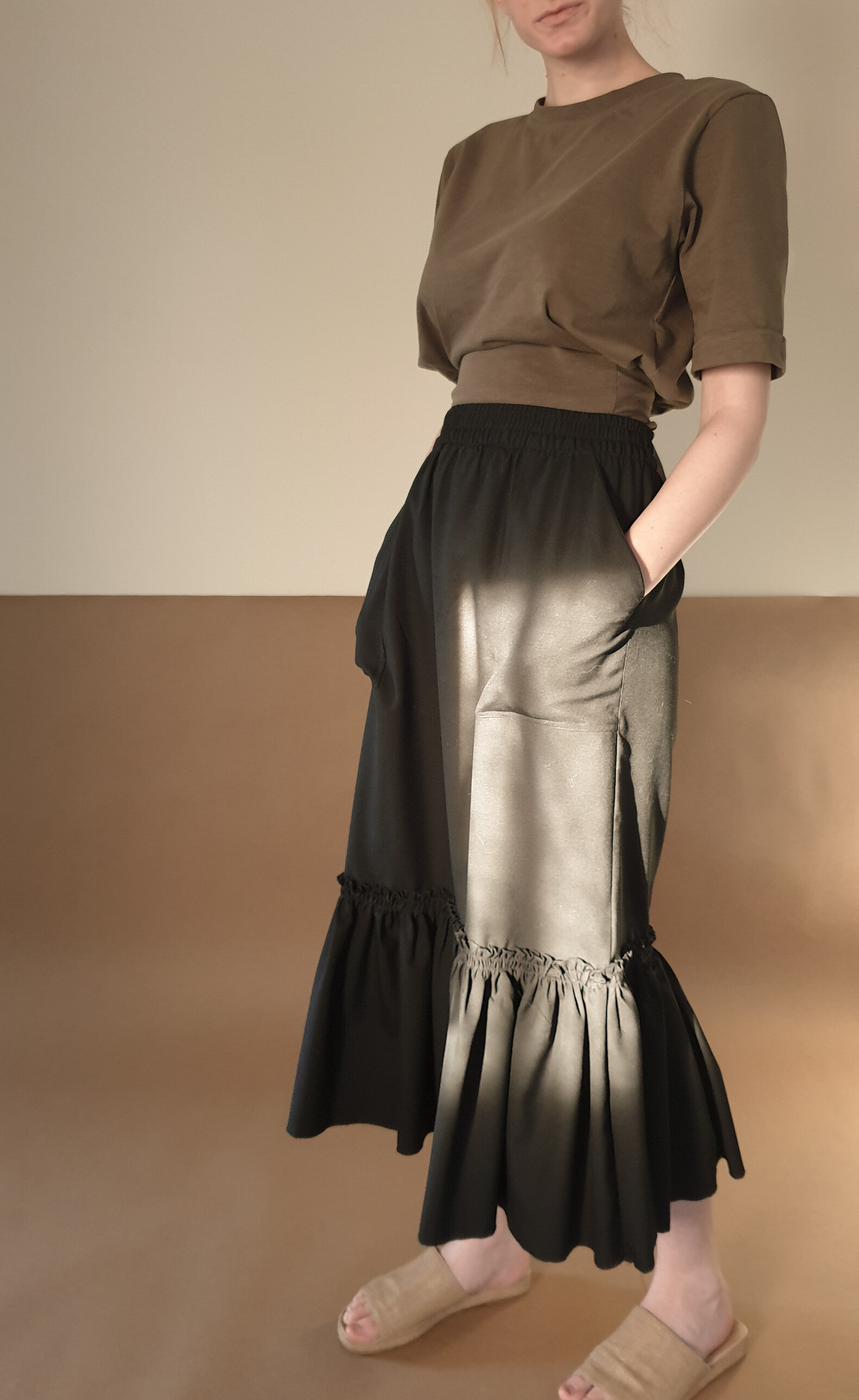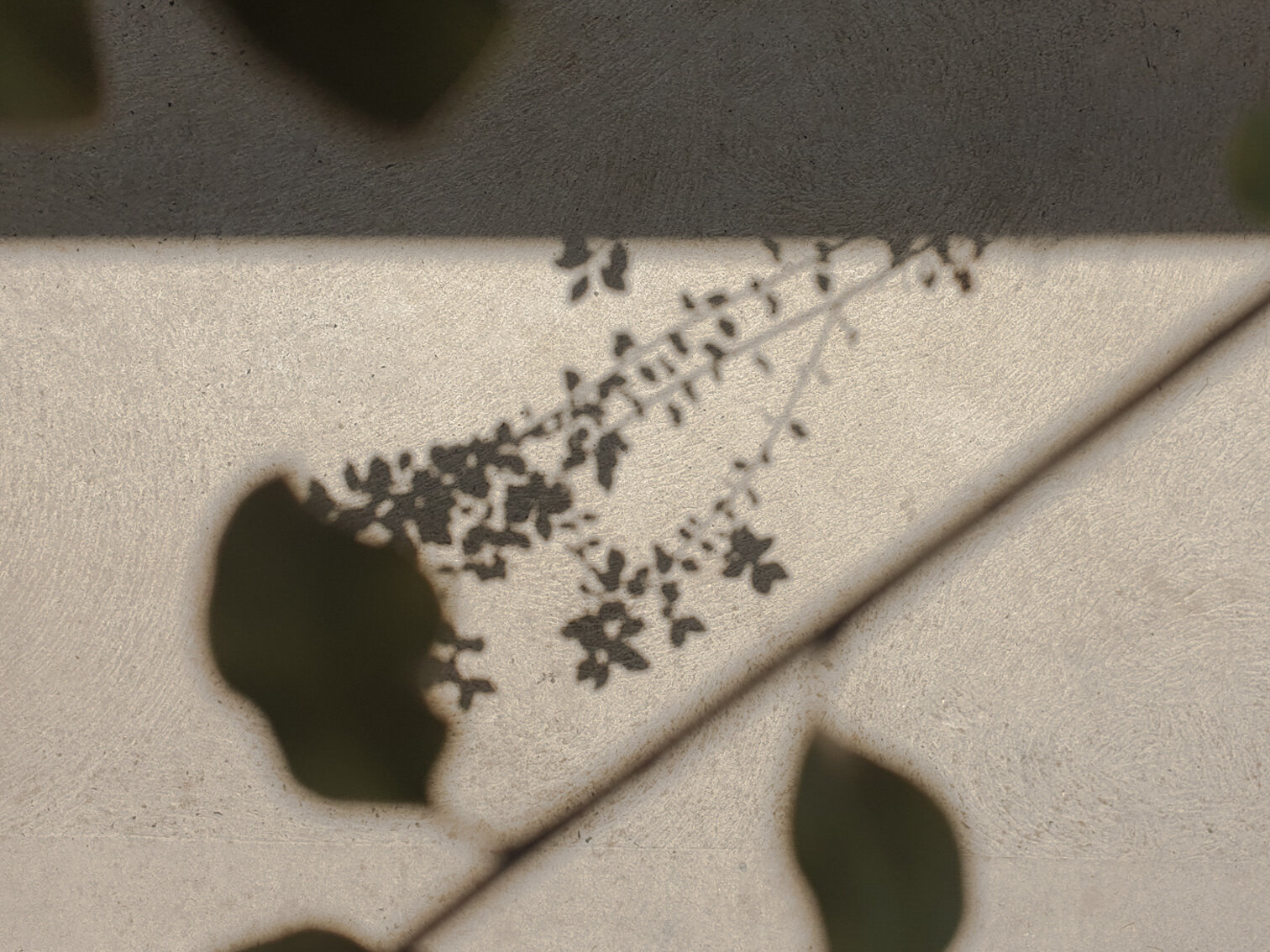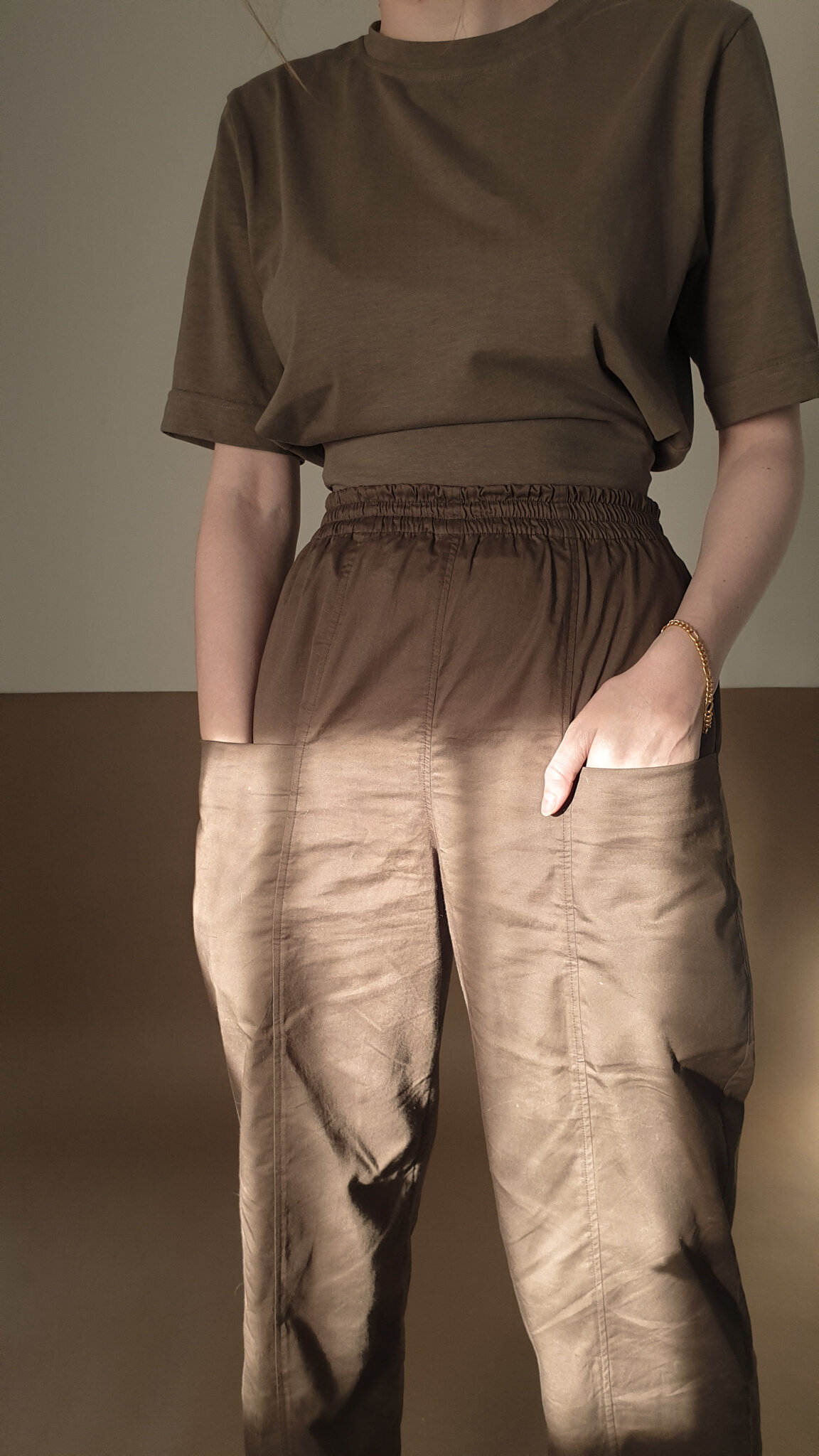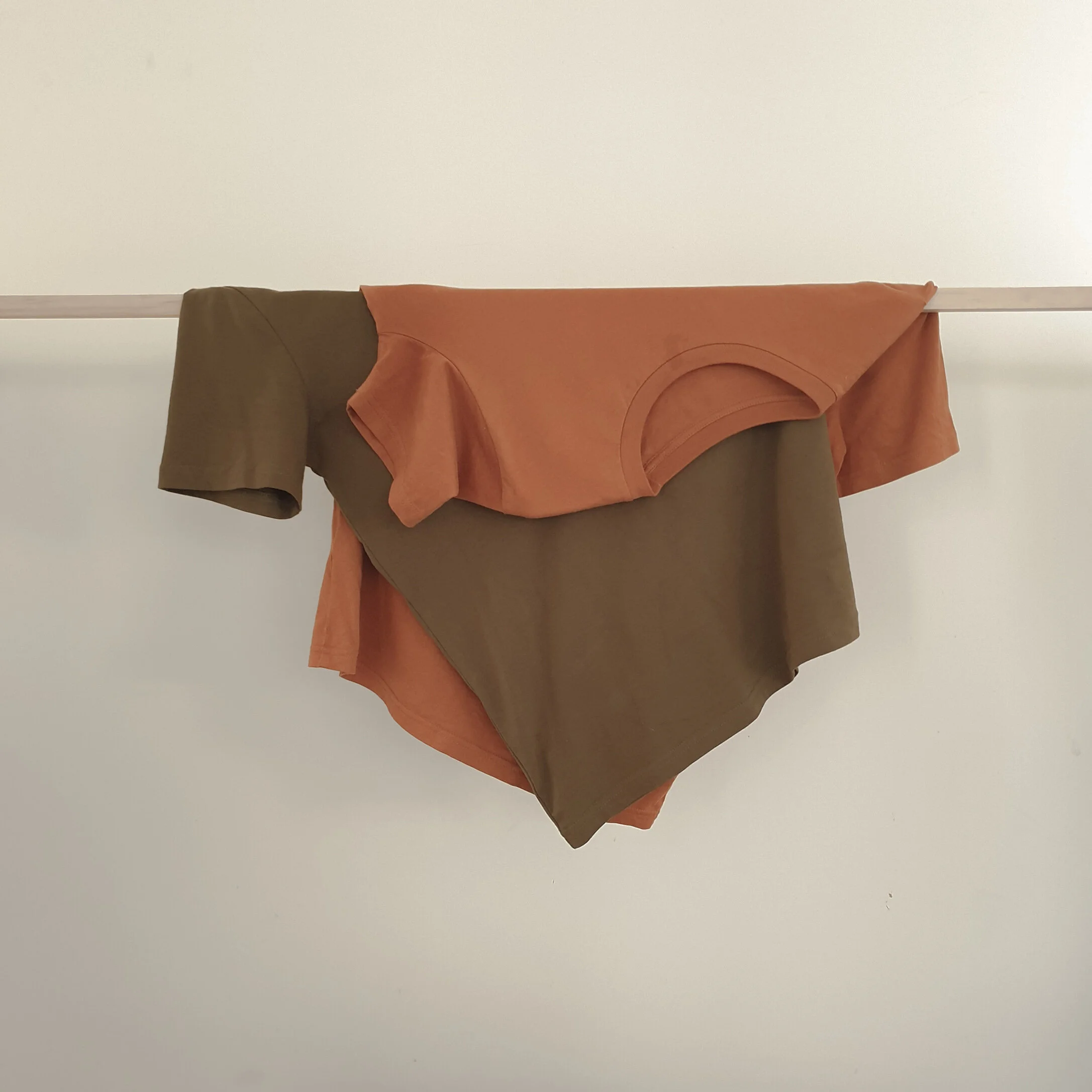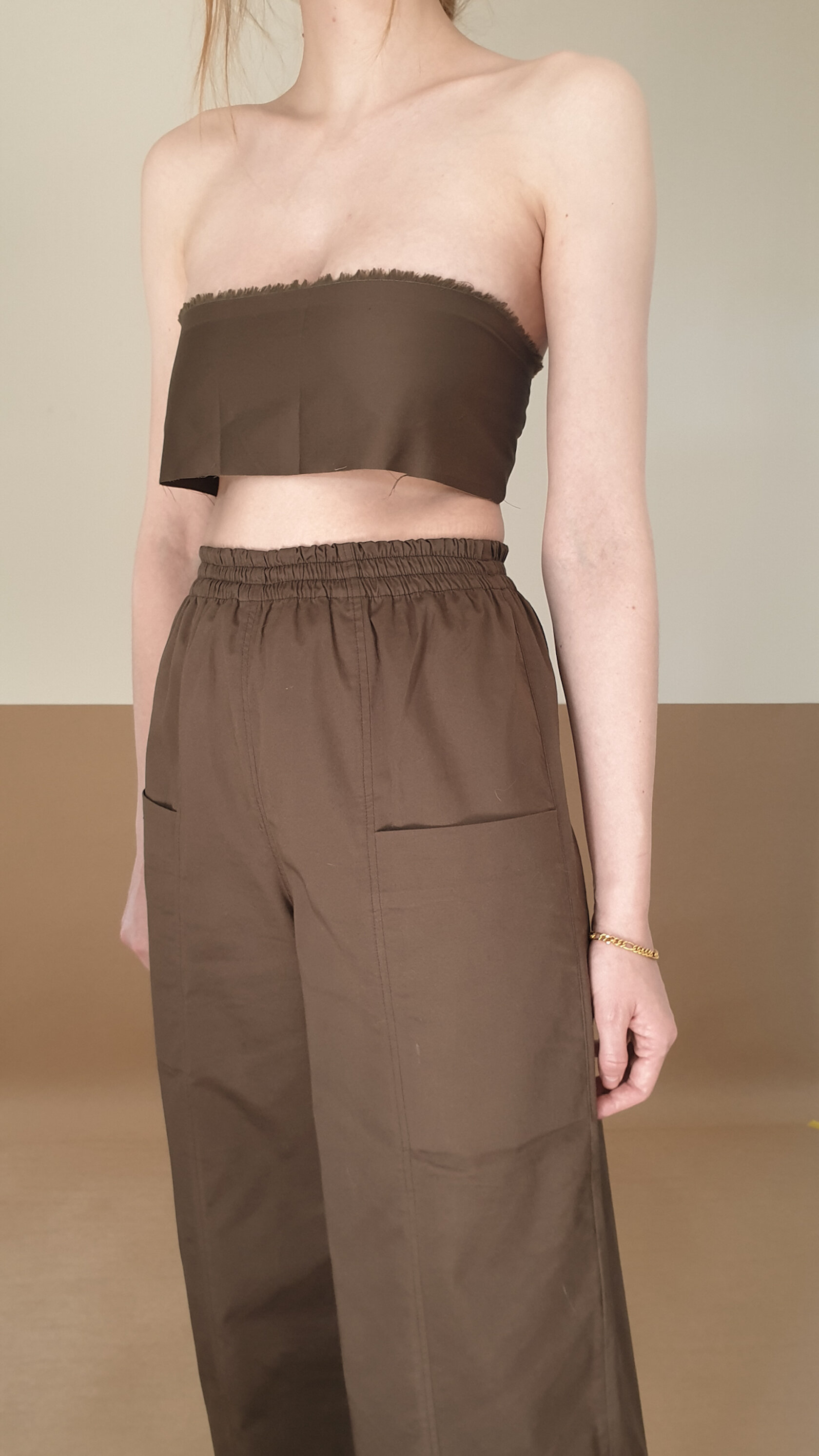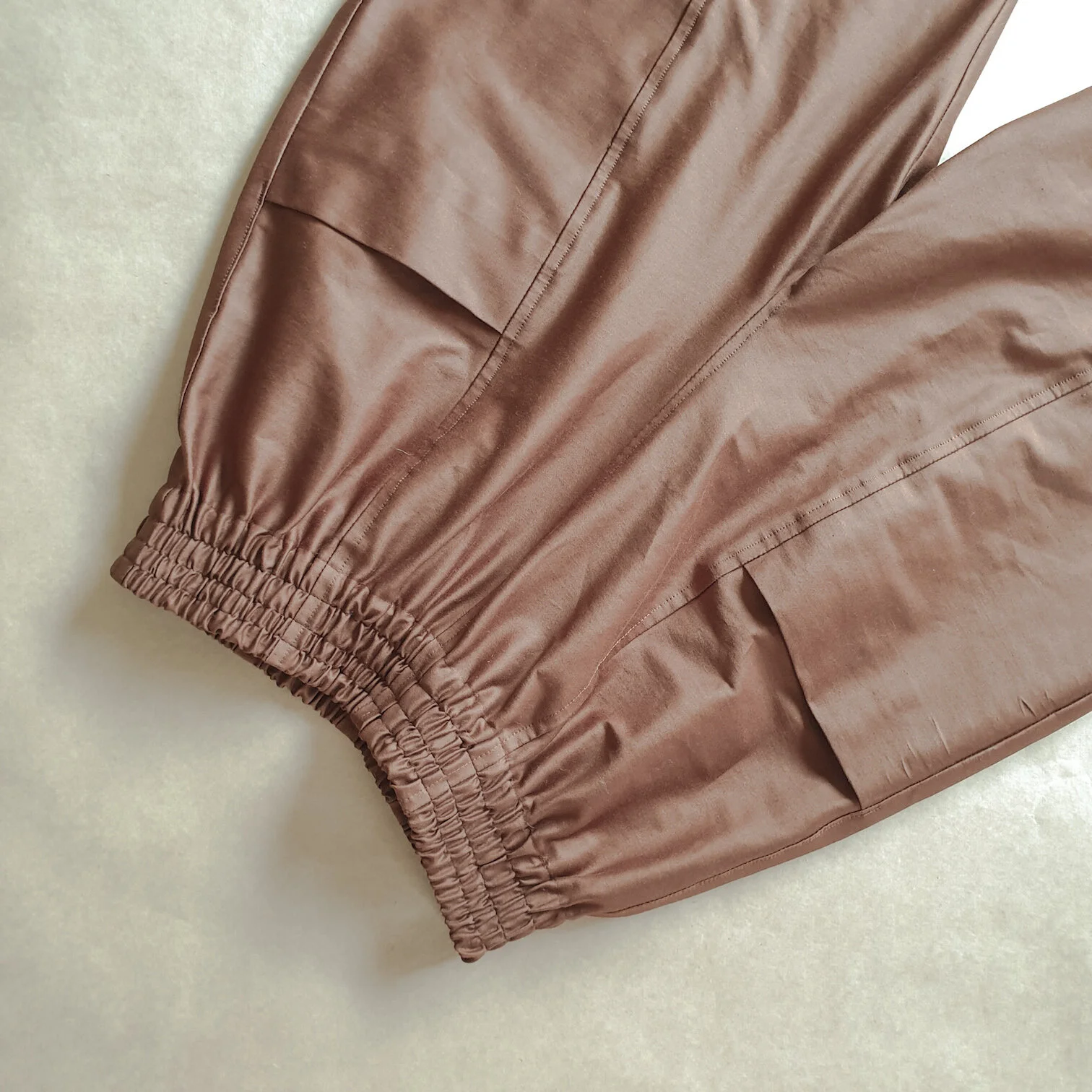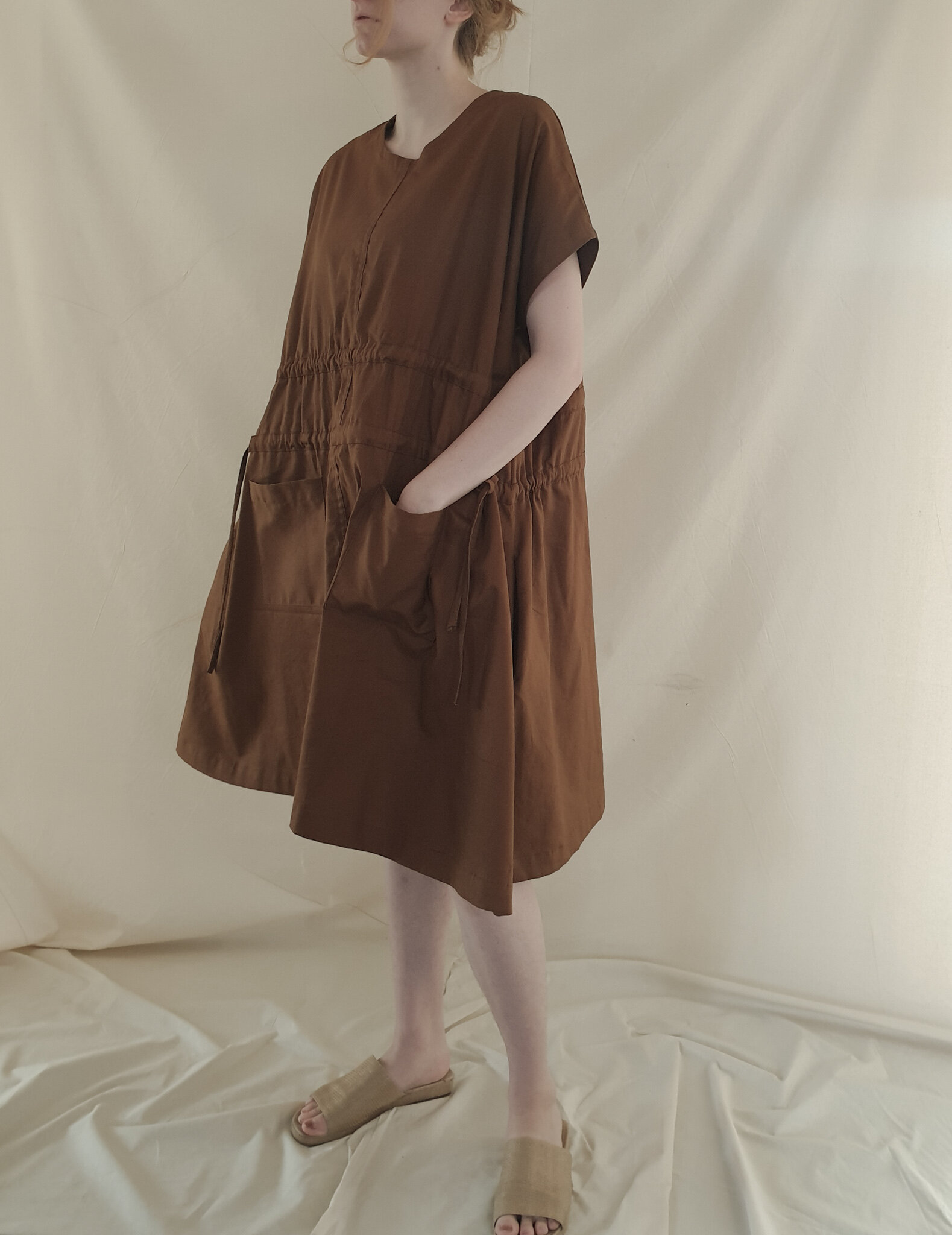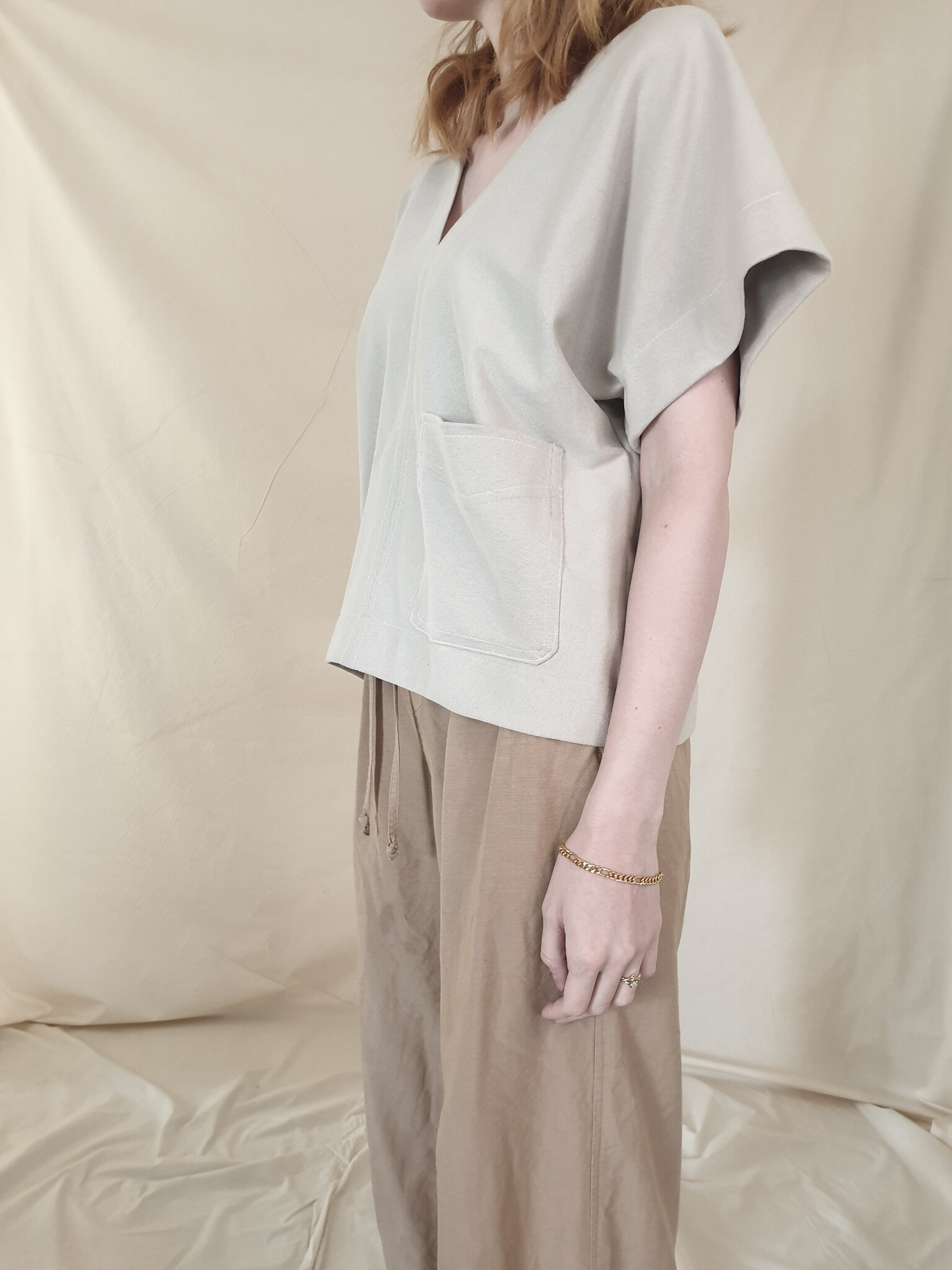SANCT
Sanct encourages slower living, self-care and inclusivity through the lens of sustainably made fashion. Earthy, deep tones and classic styles with a sense of elevated comfort drive the design of Sanct, which will launch later this year. Sanct is more than just a brand, it is a journey exploring the complicated relationship between fashion and sustainability. Sanct is in the business of creating with purpose, putting our planet and people first.
Transparency is a strong focus - the only way to see a meaningful shift in the fashion industry is through collaboration, open discussion and shared knowledge so that everyone can all do better together. Sanct shares the journey of developing a fashion brand with the core values; ‘Empower people, protect the earth’ with the hope that this transparency will encourage and enable more creatives to work within this space.”
FOUNDER DANIELLE ABERY-MILLER
Sanct was founded in 2019 by owner/creative director Danielle Abery-Miller.
Danielle studied at RMIT University where she achieved her Bachelor of Fashion Design. After working in commercial ‘fast’ fashion for years, she felt drawn to take part in a slower, more ethical fashion practice. This led her to start Sanct.
Danielle left her 9-5 job with a vision to work within a new fashion model that encourages community, shared knowledge and transparent practices to foster a shift towards a more positive industry.
She creates mindfully considered pieces that feel emotionally connected to nature through the use of colour and functionality. Fostering such a connection, she hopes the owner of a Sanct piece will treasure it, breaking the cycle of fast fashion disposability.
We spoke to Danielle about Sanct and her vision for the label and the fashion industry.
Tell us about how Sanct the label was created?
My journey to starting Sanct started after uni, with an accelerated introduction to commercial fashion jobs. I’ve worked as a designer, sample cutter, QC & production coordinator with many varied tasks in between.
Working for smaller Australian brands allowed me to immerse myself in the behind the scenes fashion world including designing, manufacturing and how it all works. I became fatigued with the lack of responsibility taken by brands to focus on or even include sustainability in the process of making.
After some personal health issues and a desire to work in a different model of fashion business, I quit my 9-5 and started Sanct.
What I hope we will see in sustainable fashion over the coming years.
I hope we start to see sustainability become a first consideration In designing and making of clothing. Sustainability is too complex to be an afterthought, especially in physical product based industries.
I hope consumers can become increasingly aware of greenwashing and support brands who genuinely live and breathe sustainability. I also hope we can all continue to celebrate and participate in the growing recycled fashion movement.
I encourage everyone to look at shopping their own wardrobes, ie; Re-discovering what you already have. This can be super fun to do with a friend who might have a fresh perspective on how to style a tricky item.
Secondly, shopping second hand if this is available to you, there are lots of different second hand stores and clothing swaps popping up that make this a fun community based activity.
And lastly, if buying new, shop with brands who are committed to sustainability at every stage. Analyse the garment you want to buy with a set of criteria that reflect your values.
What I look for when buying clothing.
When I look to buy a new fashion item I consider the design, quality and end of life.
The design should be something I can work back in with what I already own. I will consider if it’s a design I will want to make part of my weekly outfits cycle.
When checking for quality I will assess the seams and fabric quality. Are the seams strong? Does the fabric look like it will stand the test of time after many washes and wears?
I’ll then evaluate the end of life. I only purchase natural fibres as these will biodegrade when the garment reaches the end of its life.
Brands offering a take back program to recycle old/unwearable clothes into new fibres would also be a big selling point for me.
